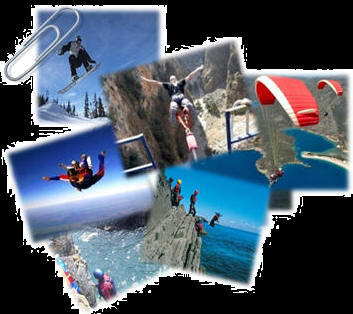Swimming or Adventure Swimming: in calm water; rough or white water; and/ or tidal currents. Dressing for swimming in the sea (wetsuits, buoyancy aids etc) is an integral part of Coasteering; even on routes where it is possible to stay dry. A route, or activity, where the group start out with the intention of staying dry - whether through route choice or the use of ropes and harnesses - is not coasteering.
Climbing, scrambling, sea level traversing: the very nature of the coastline that is needed for coasteering demands aspects of these activities. Ropes, as security on rock, are not used. Any climbing activity usually takes place above deep water, with safety spotters used where appropriate. There is a similarity to the sport of deep-water soloing, but this would normally be carried out by experienced individuals not wearing equipment suitable for coasteering. Coasteering is never a dry, climbing activity.
Jumping and Diving: are often seen as an appealing and exciting part of coasteering. These activities actually make up minimal content of a coasteering session







